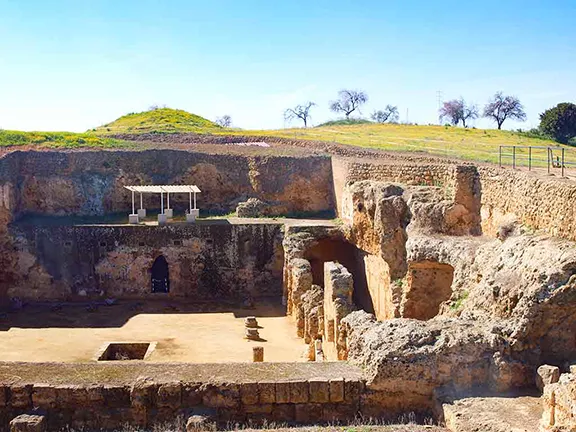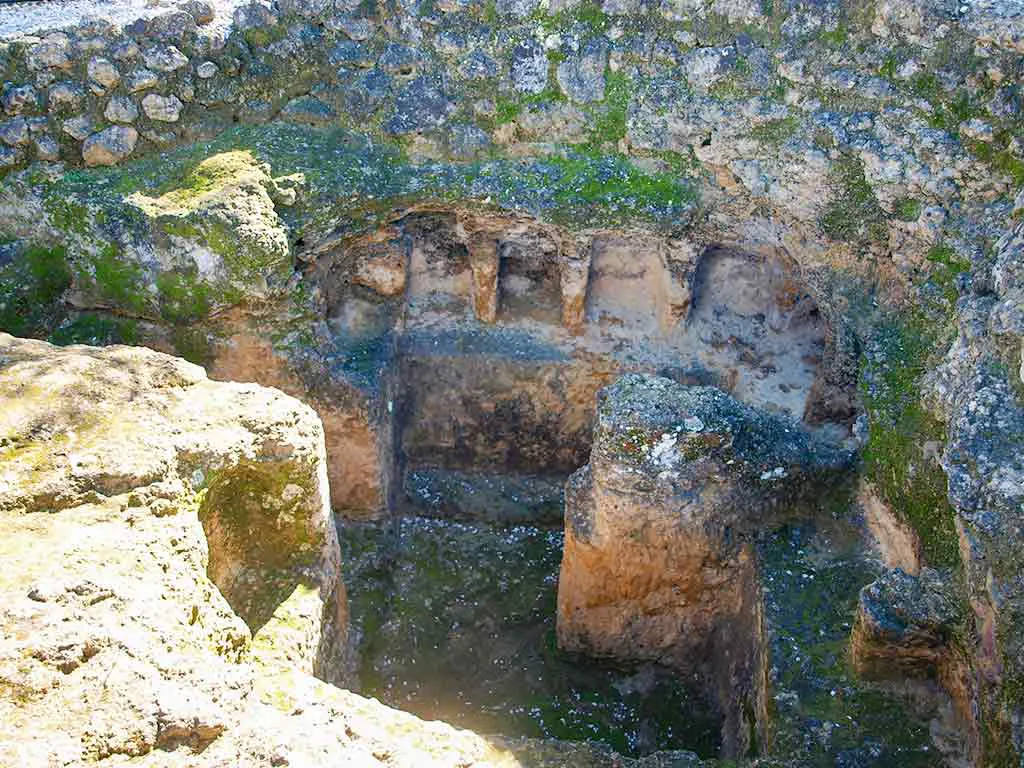The Roman Necropolis at Carmona, near Seville, is one of the largest and best-preserved Roman burial grounds in Spain.
By Nick Nutter | Updated 14 Sep 2022 | Seville | Places To Go |
Login to add to YOUR Favourites or Read Later


Roman Necropolis Carmona
The Roman Necropolis at Carmona was in use between the 1st and 2nd centuries AD and was then located outside the city walls.
Incineration was the normal ritual in the Necropolis of Carmona. A pit would be dug into the rock that then became the funeral pyre. Sometimes the ashes would be removed to family vaults, other times the pit would be covered with a flagstone or tiles and a headstone.
The necropolis also contains a number of monumental tombs, crypts owned by high ranking Roman families, of which two are notable, the Tomb of the Elephant and the Tomb of Servilia.


Tomb of the Elephant
The Tomb of the Elephant is a multi-chambered crypt, dug out of the rock. Entrance is at your own risk via a very modern aluminium ladder; no health and safety here. A window in the main chamber allows sunlight to hit the centre of the chamber during the summer and winter equinoxes which has led some authorities to think the tomb was originally a Mithraea, a temple dedicated to Mithraism, the worship of the Indo-Iranian deity named Mithra. Mithraism was an unofficial religion in the Roman Empire whose members were often high ranking army officers. The tomb however is named for the statue of an elephant found within that is now in the museum in Carmona.
A more recent interpretation also involves deities from the east, Cybele and Attis. The Iberian population of Carmona had been influenced by eastern Mediterranean cultures for hundreds of years and other discoveries in the necropolis indicate the worship of Attis, a god who died and was reborn every year and Cybele, the mistress of life and death.


Tomb of Servilia
The Tomb of Servilia is the largest tomb in the necropolis and also shows an affinity with eastern Mediterranean cultures since it is built in a Hellenistic style. Dug into the ground, the Tomb of Servilia is in the form of a luxurious Roman villa with rooms surrounding a porticoed and columned courtyard. Statues, many of which are now housed in the Carmona City Museum and the Archaeological Museum of Seville, lined these porticos. The statue of Servilia was discovered in one of the chambers. At the front of the courtyard is the funeral chamber with a large vestibule covered by a pointed vault; a unique feature in the area.


Family Vault
Family vaults were the most popular form of burial in the Necropolis at Carmona. Most had certain features in common. They were reached via stone steps cut into the rock that led to a square or rectangular chamber. A low bench ran around the walls on which offerings were made. Above the bench were niches that contained the ashes of individual family members. Some chambers still have the remains of the doors that sealed them whilst others were sealed with stone slabs. The chambers would have been decorated with plaster and frescoes.